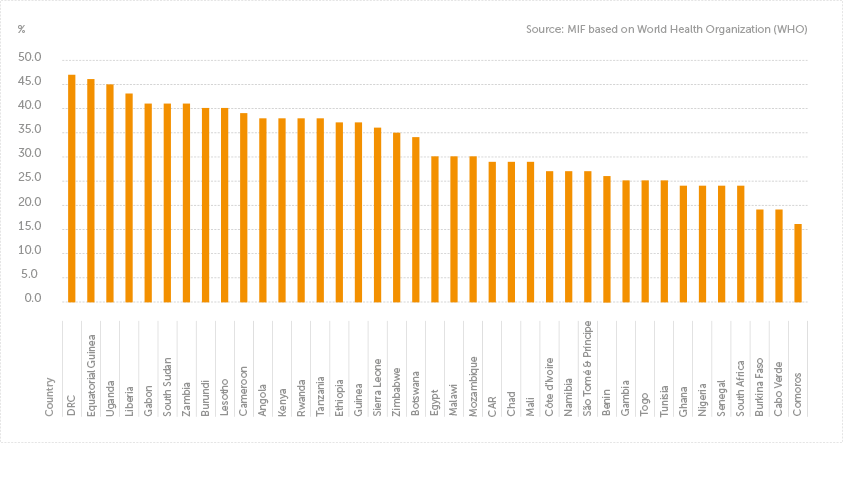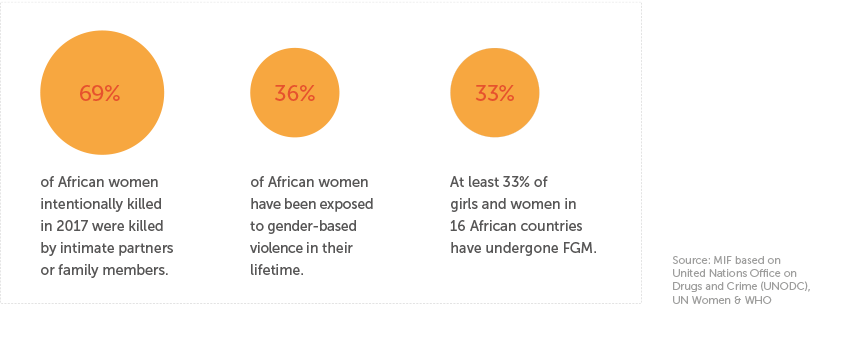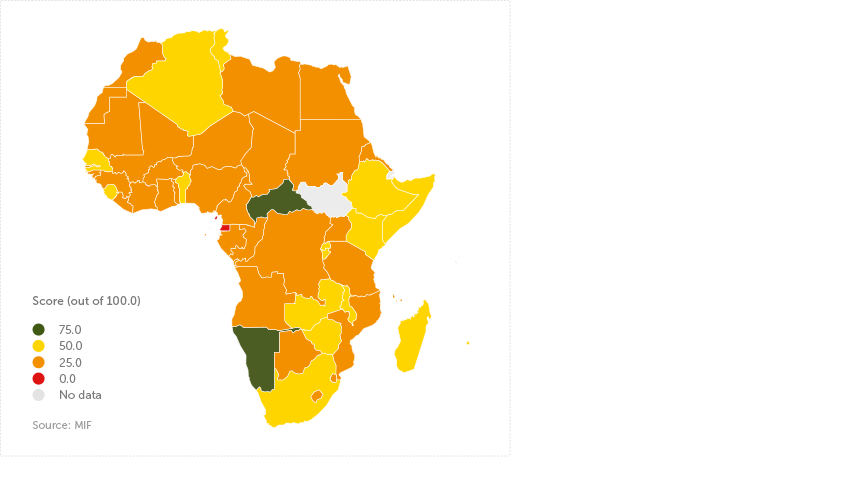

Spotlight 20: Violence against women: the shadow pandemic for which there is no vaccine
By Ines Schultes, Senior Researcher
Adopting the Declaration on the Elimination of Violence against Women in 1993, the United Nations General Assembly highlighted how violence against women is a fundamental obstacle to the achievement of equality, development and peace. With the 2003 AU Protocol to the African Charter on Human and Peoples’ Rights on the Rights of Women in Africa, African Union member states have committed to ensuring the protection of women from all forms of violence. The continued relevance of this issue is also reflected in the UN’s Sustainable Development Goals (SDGs) and the AU’s Agenda 2063, the two frameworks that are now guiding Africa’s development.
What is violence against women?
The AU Protocol to the African Charter on Human and Peoples’ Rights on the Rights of Women in Africa defines violence against women as “all acts perpetrated against women which cause or could cause them physical, sexual, psychological, and economic harm, including the threat to take such acts; or to undertake the imposition of arbitrary restrictions on or deprivation of fundamental freedoms in private or public life in peace time and during situations of armed conflicts or of war.”
Violence against women in the SDGs and Agenda 2063
SDG 5 is dedicated to gender equality and the empowerment of all women and girls. It contains two targets that explicitly focus on eradicating violence: Target 5.2: “Eliminate all forms of violence against women and girls in the public and private spheres, including trafficking and sexual and other types of exploitation”; and Target 5.3: “Eliminate all harmful practices, such as child, early and forced marriage and female genital mutilation”.
Within Agenda 2063, Aspiration 6 aims at “an Africa whose development is people driven, relying on the potential offered by African People, especially its Women and Youth, and caring for Children”. One of the three goals of this Aspiration is full gender equality in all spheres of life, with combatting violence and discrimination towards women and girls identified as a priority. The elimination of gender-based violence is also part of Agenda 2063’s flagship project ‘Silencing the Guns’.
However, almost 30 years after the adoption of the UN declaration, the world is still far from being a safe place for women. Levels of gender-based violence are high and have remained largely unchanged over the last decade. The global cost of violence against women are estimated at a staggering USD 1.5 trillion. Alarmingly, the situation has been exacerbated by the COVID-19 pandemic, with lockdowns triggering such a steep rise in violence against women that it is being referred to as the ‘shadow pandemic’.
Research Spotlight series
A new series exploring data and key findings from the 2021 Ibrahim Forum Report.
Africa is the world’s most dangerous region for women
Globally, an estimated 736 million women aged 15 or older, almost one in three (30%), have been subject to gender-based violence at least once in their lifetime, either by an intimate partner or person they were not in an intimate relationship with. The problem is most prevalent in Africa where 36% of women have been exposed to violence. The most common perpetrators are current or former intimate partners.
The prevalence of life-time intimate partner violence in Africa is highest in DR Congo (47%), Equatorial Guinea (46%) and Uganda (45%). In only three countries (Burkina Faso, Cabo Verde and Comoros) have fewer than 20% of women been subjected to intimate partner violence.
African countries: Proportion of ever-partnered women and girls aged 15-59 years subjected to physical and/or sexual violence by a current or former intimate partner in their lifetime (2018)

Estimate for WHO Africa region which does not include Djibouti, Egypt, Libya, Morocco, Somalia, Sudan and Tunisia which are part of WHO’s Eastern Mediterranean Region.
Tragically, such violence can lead to the killing of women. In 2017, 87,000 women were killed worldwide by an intimate partner or family member. Globally, the risk for women of being killed by a partner or a family member is highest in Africa, with a homicide rate of 3.1 per 100,000 women. More than two-thirds (69%) of all women intentionally killed in Africa in 2017 were killed by intimate partners or other family members. For African women, sadly, the home is the most likely place to be killed.
Other forms of gender-based violence such as child marriage and female genital mutilation (FGM) are also highly prevalent in Africa. In 19 African countries, at least one in three women aged 20-24 were married before the age of 18. In 16 African countries, at least one in three girls and women aged 15-49 have undergone female genital mutilation.

These figures predate the impact of COVID-19. Recent research by UN Women shows that in Eswatini, South Africa and Uganda, at least 70% of women have felt an increase in violence since the start of the pandemic. The United Nations Population Fund (UNFPA) estimates that COVID-19 is likely to cause a one-third reduction in progress towards ending gender-based violence and FGM by 2030.
Protection for women is weak
The 2020 Ibrahim Index of African Governance (IIAG) highlights that legal mechanisms for protecting women against violence are still weak. With an African average score of 35.4 (out of 100.0) in 2019, Laws on Violence against Women is the 10th lowest scoring of the 79 IIAG indicators. Only two countries, Central African Republic and Namibia, receive a score higher than 50.0.
African countries: Laws on Violence against Women, IIAG scores (2019)

However, even in these two cases, the legal framework does not take a comprehensive approach to protecting women. For example, in CAR the law does not include provisions for the prevention of domestic violence. In the majority of African countries (31), the legal framework does not encompass all forms of violence. In 21 African countries, there is no legal protection against FGM. Even where laws exist, their implementation is often insufficient.
Support services are also in need of expansion. In 15 African countries (out of 31 with data), medical and legal support services for victims of sexual violence are non-existent or limited in scope. With the onset of the COVID-19 pandemic, support services struggled to meet demands and access was often limited.
No sustainable development in a world where women are not safe
These alarming numbers stress the urgent need to tackle the ‘shadow pandemic’ of gender-based violence. If the issue is not addressed, achieving the SDGs and Agenda 2063 is jeopardised. While being a goal in itself, a safe world for women is also essential for achieving other development goals such as poverty eradication, access to health care and education, decent work, and just and peaceful societies.